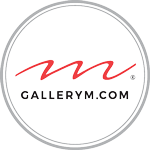Irving Penn (American: 1917 – 2009) modernized fashion photography.Born in Plainfield, New Jersey to immigrant parents, Irving Penn attended the Philadelphia Museum School of Industrial Arts from 1934-1938. Alexey Brodovitch, who had previously worked in Paris during the 1920’s, taught Penn the principles of modern art and design through exposure to magazines, exhibitions, architecture, and photography.
When Brodovitch moved to Harper’s Bazaar soon after Penn’s graduation, Penn followed him to work as his assistant . The principles he learned from Brodovitch guided Penn throughout his lengthy career.
After leaving Harper’s Bazaar in the early 1940’s and traveling to Mexico to explore his talent as a painter, Penn returned to New York as he realized his unique creativity was not in painting. Alexander Liberman, the new art director for Vogue Magazine, hired Penn in 1943. He recognized that Penn possessed ”a mind, and an eye that knew what it wanted to see.” This hire launched a long and fruitful career as well as a collaboration that transformed modern photography,
In 1950 he assigned Penn to Paris to photograph the Haute Couture. During this assignment, Penn was graced with an extraordinary model, Lisa Fonssagrives, one of the most sought-after fashion models of the time. Penn had first encountered her in 1947. This time, her sophistication and her innate understanding of form and posture brought them together for good. They married in the Fall of 1950.
Penn’s fashion editorial work spanned over five decades. Most noteworthy is Harlequin Dress (1950). As perhaps one of his greatest and most recognizable fashion images, it specifically avoids focusing on the larger room accessories, props and stark surfaces to highlight the fashion and the model's purity. In this case, the model was his wife Lisa Fossagraves-Penn.
Initially, Penn’s vision had a perfect outlet in Vogue, where it was finely reproduced and widely circulated. However, the editors began to feel that these photographs were too severe for the magazine’s readers. His assignments began to diminish. Thus, he turned to advertising for his creative outlet, Penn welcomed the challenges and rewards. found with advertising assignments. He even developed new strategies and techniques to meet the needs of this new visual medium.
During the 70s and 80s Penn's personal portfolio work explored subject matter and technique. His personal studio in Long Island became a print making laboratory, specifically recognized for his Platinum prints. The subject matter culminated into three major series conceived for platinum:
- Cigarettes (1972, presented at The Museum of Modern Art in 1975),
- Street Material (1975–76, shown at The Metropolitan Museum of Art in 1977)
- Archaeology (1979–80, exhibited at Marlborough Gallery in 1982).
Like his earlier Nudes series, this work departed radically from the prevailing uses of photography.
During the last decades of his life, Penn's creativity was rewarded with museum exhibitions and a new-found private collector base, who responded to his vision. His innovative portraits, still life, fashion, and beauty photographs continued to appear regularly in Vogue. The studio was busy with magazine, advertising, and personal work. Determined to shape the body of work he left behind from such a prolific career, he also carefully structured and reduced his archives. Particularly after Lisa's death in 1992, he sought solace in his work and in the structure of his studio schedule. In 2009, Penn died in New York, at the age of 92.
GALLERY M represents a select body of Irving Penn's photographs. View the collection online or by speaking with a specialist today.


